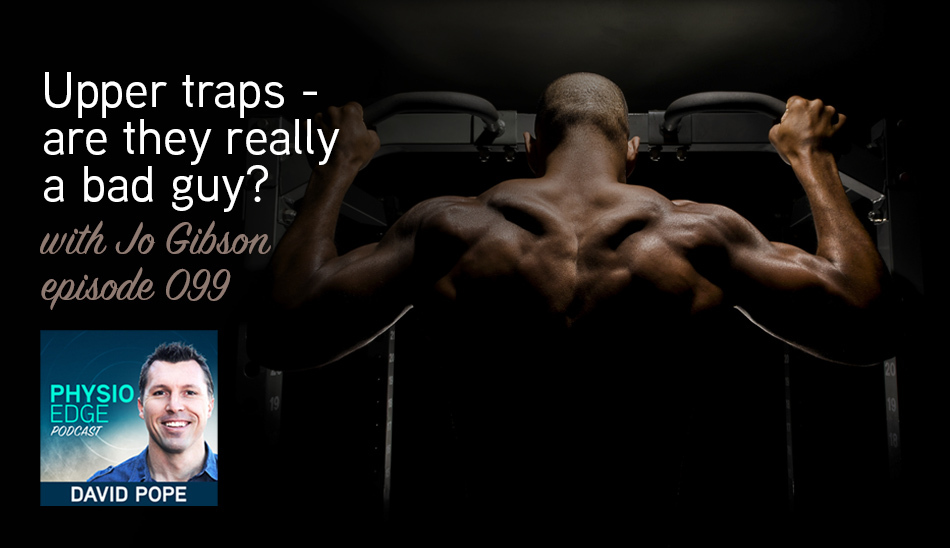
Patients with shoulder pain, rotator cuff tears and nerve injuries can often be seen shrugging their shoulder while they lift their arm, appearing to overuse their upper fibres of trapezius. Surface EMG research has shown increased activity in UFT in shoulder pain and whiplash patients. To add to this, patients get sore upper traps, and can be adamant that they need regular massage of their upper fibres of trapezius (UFT).
We seem to have plenty of evidence that we need to decrease UFT muscle activity, and help this by providing exercises to target the middle and lower traps.
Is this really the case? Are the upper traps really a bad guy, or a victim caught in the spotlight? Do we need to decrease upper traps muscle activity to help our patients shoulder or neck pain? Or perhaps counter-intuitively, do we need to strengthen upper traps and help them to work together with the surrounding muscles?
In this podcast, Jo Gibson (Clinical Specialist Physio) explores the evidence around the upper fibres of trapezius, and implications on your clinical practice. You’ll discover:
- What are the myths around upper traps?
- Are upper fibres of trapezius a bad guy or a victim?
- Why do upper traps sometimes seem to be overactive?
- Should we aim to increase the activity in middle and lower traps?
- What information does surface EMG really provide?
- Can taping of the scapula change recruitment of the trapezius?
- Should we strengthen UFT?
- Why is initial activation of the UFT important in shoulder elevation movements?
- Why should patients with rotator cuff tears or stiff & painful shoulders use upper traps more with their movements?
- How can we incorporate UFT strengthening into our shoulder strengthening?
- What exercises can we use to strengthen UFT without increasing activity in levator scapulae?
- Why is UFT strengthening important in ACJ injury rehab?
- In gym goers, what scapula setting errors are commonly used?
- How do nerve injuries that affect the upper traps impact movement?
- Do trigger points or soreness indicate that our patients need massage or exercises to decrease UFT activity?
Download this episode now to improve your treatment of shoulder and neck pain.
Podcast handout
Free shoulder assessment infographic series
Shoulder: Steps to Success online course with Jo Gibson
Improve your assessment and treatment of shoulder pain with the Shoulder: Steps to Success online course with Jo Gibson, now available for enrolment at clinicaledge.co/shouldersuccess
Links associated with this episode:
- Get your access to the free video series “Frozen shoulder assessment & treatment” with Jo Gibson
- Improve your shoulder assessment & treatment with the Shoulder: Steps to Success online course with Jo Gibson
- Download and subscribe to the podcast on iTunes
- Download the podcast now using the best podcast app currently in existence - Overcast
- Listen to the podcast on Spotify
- Improve your confidence and clinical reasoning with a free trial Clinical Edge membership
- Let David know what you liked about this podcast on Twitter
- Review the podcast on iTunes
- Like the podcast on Facebook
- Infographics by Clinical Edge
- Jo Gibson on Twitter
Articles associated with this episode:
-
Download the podcast handout to receive the articles associated with this podcast.





